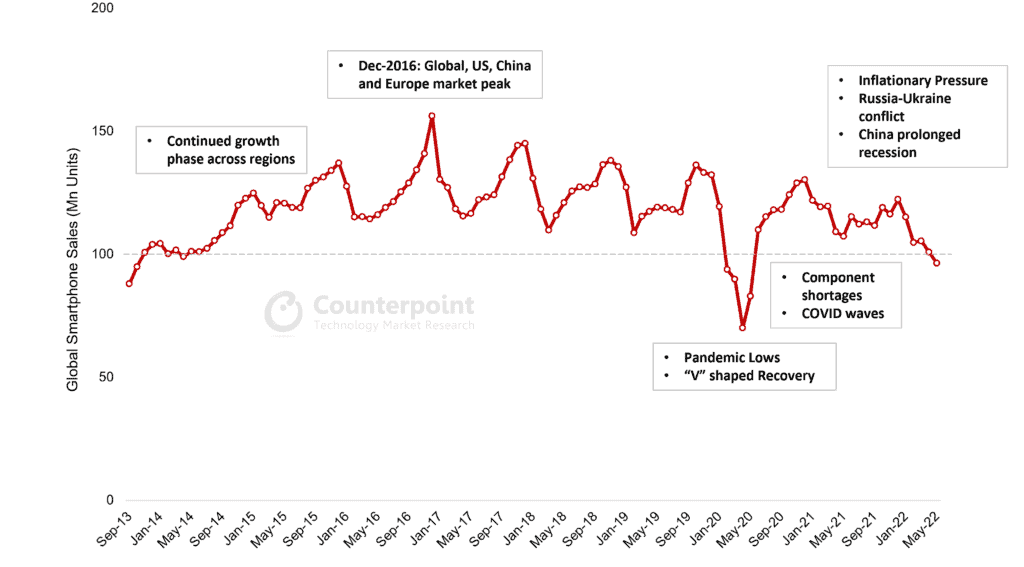A study conducted by Counterpoint Technology Market Research suggests that smartphone sales are falling globally. This is due to several reasons. The current geopolitical situation, high inflation, a shortage of electronic components; and a disruption in the operation of logistics channels.
In May, global smartphone shipments fell below 100 million units to 96 million units. This pattern is only visible for the second time in a period of almost ten years. Deliveries decreased by 4% compared to April of this year and by 10% compared to May 2021.
Commenting on inflationary pressures, Research Director Tarun Pathak said, “Replacement powers the demand for a smartphone especially in the advanced economies, which makes it a discretionary purchase. And inflationary pressures are leading to pessimistic consumer sentiment around the globe with people postponing non-essential purchases, including smartphones. The strengthening US dollar is also hurting emerging economies. A segment of consumers is likely to wait for seasonal promotions before purchasing to offset some of the cost pressures“.
Global smartphone market sales in May drop below 100 million units

Note that on an annualized basis, the demand for smartphones has been declining for 11 quarters in a row. In the current environment, consumers are postponing non-essential purchases, including smartphones. Analysts say that many potential buyers are waiting for seasonal discounts and promotions to offset the increase in the cost of gadgets.
Commenting on the China market, and the Ukraine crisis, Senior Analyst Varun Mishra said, “China’s lockdowns and prolonged economic slowdown has been hurting domestic demand as well as undermining the global supply chain. The smartphone market in China recovered slightly month on month in May as lockdowns eased; however, it remained 17% below May 2021. There may need to be a new baseline market size defined for China’s smartphone market. Added to this is the uncertainty created by the Russia-Ukraine crisis, which is hurting demand in Eastern Europe. None of the OEMs seems to have no effect from the negative impact on demand due to a mix of these factors.”
At the same time, low demand leads to an increase in stocks, which, in turn, provokes a reduction in supply. The sales of the second quarter of 2022 is likely to be low; but the situation will begin to stabilize in the second half of the year.






Place comments
0 Comments
You are currently seeing only the comments you are notified about, if you want to see all comments from this post, click the button below.
Show all comments